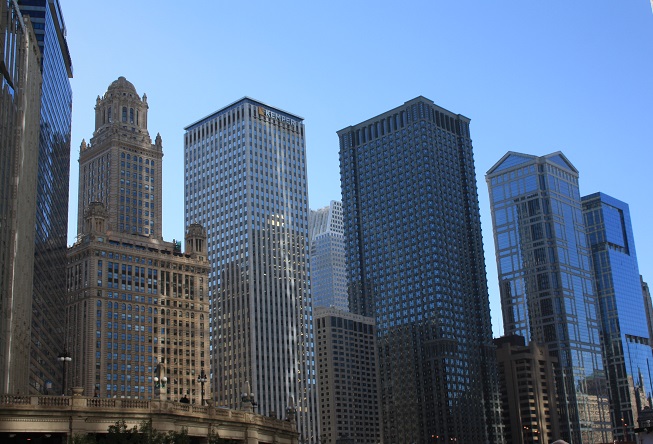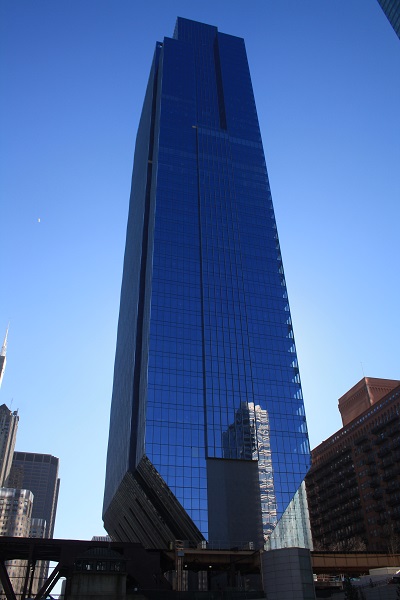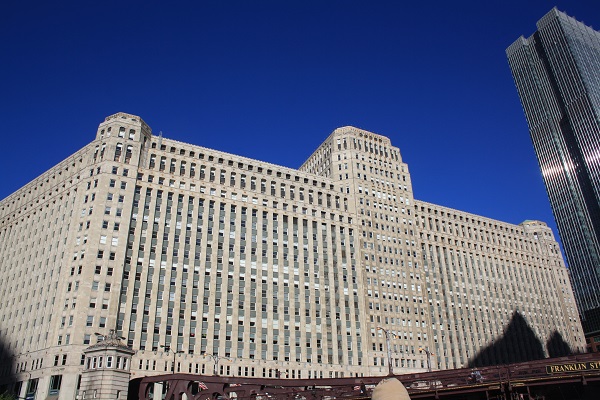Main author
Michael BrooksChicago Architecture Foundation River Cruise - review
Despite being established as recently as 1837, making it an 'early-teenager' in terms of city lifespans, Chicago is something of an open-air museum when it comes to modern architecture. By far the best way to experience this museum of architectural styles and forms is to board the River Cruise run by the non-profit Chicago Architecture Foundation.
The tour is ranked one of the top 10 in the US by TripAdvisor, and operates several times a day from April through to late-November. It is held on an understated First Lady cruise-boat, and conducted by a team of volunteers who brim with insightful anecdotes, expert knowledge and a real enthusiasm for their city and its history.
The tour begins with some striking facts, not about the buildings, but about the river itself.
In 1900, it was dramatically reversed by engineers for public sanitation and to keep clean the mighty Lake Michigan into which the river originally flowed. Chicago's pioneering propensity was already assured by this time, with the first skyscrapers sprouting up from the scorched ground following the devastating fire of 1871.
The tour begins at the Riverwalk on the north side of the downtown 'Loop', surrounded by vertiginous skyscrapers, each with their own unique aesthetic.
Immediately opposite the dock is the Renaissance Revival-style Wrigley Building (image above), built in 1924 for the chewing gum company with gleaming white terracotta tiles, and a clocktower modelled on the Giralda bell tower in Seville.
Alongside this, Tribune Tower (image below), is a neo-Gothic building completed in 1925, characterised by the ornate buttresses surrounding the peak, influenced by Rouen Cathedral in France.
Built in the same year on the other side of the river, is one of the city's most recognisable buildings - 35 East Wacker, also known as the Jewelers Building (left in the image below). The building merges the Art Deco style of the time with dome, spires and cupolas influenced by Roman, Greek, and Gothic architecture.
Directly opposite is the Trump International Hotel and Tower (image below), completed in 2009 by Skidmore, Owings and Merrill. At a height of 423 m (1,389 ft), it is currently the 15th tallest building in the world (as of 2016). The three setback features provide tasteful continuity with the surrounding skyline, although the garish steel lettering across the facade is every bit as egotistical as one would expect.
Equally striking are the twin towers known as Marina City (image below), designed by Bertrand Goldberg and completed in 1967. Nicknamed the 'corn cobs' because of their semi-circular balconies, the structures have been widely praised for their innovation.
Ludwig Mies van der Rohe moved to Chicago in the late-1930s and drew upon the International Style for some of his most celebrated modernist works. The AMA Plaza (formerly the IBM Plaza), was his last building and exemplifies his trademark minimalist aesthetic.
Further along the river, the LaSalle-Wacker Building is a classic Art Deco structure dating back to 1930; clad in limestone and granite and with the centre set-back from the external facade.
More contemporary is 333 West Wacker Drive, on the south side as the river forks. This provides a good example of contextualism, as the building curves with a shimmering, green-tinted facade in harmony with the bend of the river.
Proving that Chicago's architecture still has a pioneering spirit, 150 North Riverside (image above) is remarkable for the way in which its 54-storeys are built upon a base that is only 17 m wide, with the floors cantilevering out from the central core. It is the first time that Grade 70 steel has been used in the USA.
As the boat heads down the south branch of the river, the views of the colossal Willis Tower (image below) become even more impressive. Better known by its original name - Sears Tower - the innovative skyscraper paved the way for future supertall and megatall structures, and was itself the world's tallest building from 1973 until 1998.
Taken by roof height, it still remains the tallest building in the western hemisphere (because of its spire, the official title belongs to One World Trade Center). For more information, see Willis Tower.
Heading up the north branch provides interesting views of the exciting developments that are helping change the face of the river, with new residential towers and parkland; as well as some of the original warehouse buildings dating back to the early-20th century. Most notable of these is 600 West (image below), with its horizontal emphasis and geometric ornamentation reflecting the Prairie style often associated with Frank Lloyd Wright. Built in 1908, it was Chicago's first reinforced concrete building.
Returning down the river presents an impressive view of the Merchandise Mart (image below), built in 1930 and owned by the Kennedy family for nearly 50 years. It is architecturally fascinating, with Art Deco styling, pyramidal towers, set-backs and bands of chevrons. At the time of its completion it was the largest in the world in terms of floor-space (372,000 sq. m), but was surpassed by the Pentagon in 1943.
As the boat turns around at the mouth of the Chicago River, there is a spectacular view of the city skyline, including other landmarks such as the Aon Building and the John Hancock Building (the third and fourth tallest buildings in Chicago respectively).
There is also a view of the contemporary design of Aqua (image below), completed in 2009, composed of irregularly-shaped concrete floor slabs which lend the facade an undulating, sculptural quality.
Despite being a typically 'tourist' pursuit, river tours seldom fail to offer a new and enlightening perspective. This is certainly the case for Chicago, where many of the high-rise structures reveal themselves visually from the river in a more satisfying and impressive way than from street level.
While a ticket price of $41 may seem quite steep, with a duration of 90 minutes and unparalleled perspectives of such an impressive range of buildings, together with informative commentary, it's hard not to conclude that it is well worth the expense. Indeed, the tour is recommended for everyone, architecture-buff or novice. Just be prepared to spend the rest of the day with a stiff neck...
For more information about the tour and to book tickets, see Architecture.org.
(Photography by Michael Brooks.)
[edit] Find out more
[edit] Related articles on Designing Buildings Wiki
Featured articles and news
Retrofit 25 – What's Stopping Us?
Exhibition Opens at The Building Centre.
Types of work to existing buildings
A simple circular economy wiki breakdown with further links.
A threat to the creativity that makes London special.
How can digital twins boost profitability within construction?
The smart construction dashboard, as-built data and site changes forming an accurate digital twin.
Unlocking surplus public defence land and more to speed up the delivery of housing.
The Planning and Infrastructure Bill
An outline of the bill with a mix of reactions on potential impacts from IHBC, CIEEM, CIC, ACE and EIC.
Farnborough College Unveils its Half-house for Sustainable Construction Training.
Spring Statement 2025 with reactions from industry
Confirming previously announced funding, and welfare changes amid adjusted growth forecast.
Scottish Government responds to Grenfell report
As fund for unsafe cladding assessments is launched.
CLC and BSR process map for HRB approvals
One of the initial outputs of their weekly BSR meetings.
Architects Academy at an insulation manufacturing facility
Programme of technical engagement for aspiring designers.
Building Safety Levy technical consultation response
Details of the planned levy now due in 2026.
Great British Energy install solar on school and NHS sites
200 schools and 200 NHS sites to get solar systems, as first project of the newly formed government initiative.
600 million for 60,000 more skilled construction workers
Announced by Treasury ahead of the Spring Statement.
The restoration of the novelist’s birthplace in Eastwood.
Life Critical Fire Safety External Wall System LCFS EWS
Breaking down what is meant by this now often used term.
PAC report on the Remediation of Dangerous Cladding
Recommendations on workforce, transparency, support, insurance, funding, fraud and mismanagement.
New towns, expanded settlements and housing delivery
Modular inquiry asks if new towns and expanded settlements are an effective means of delivering housing.





































